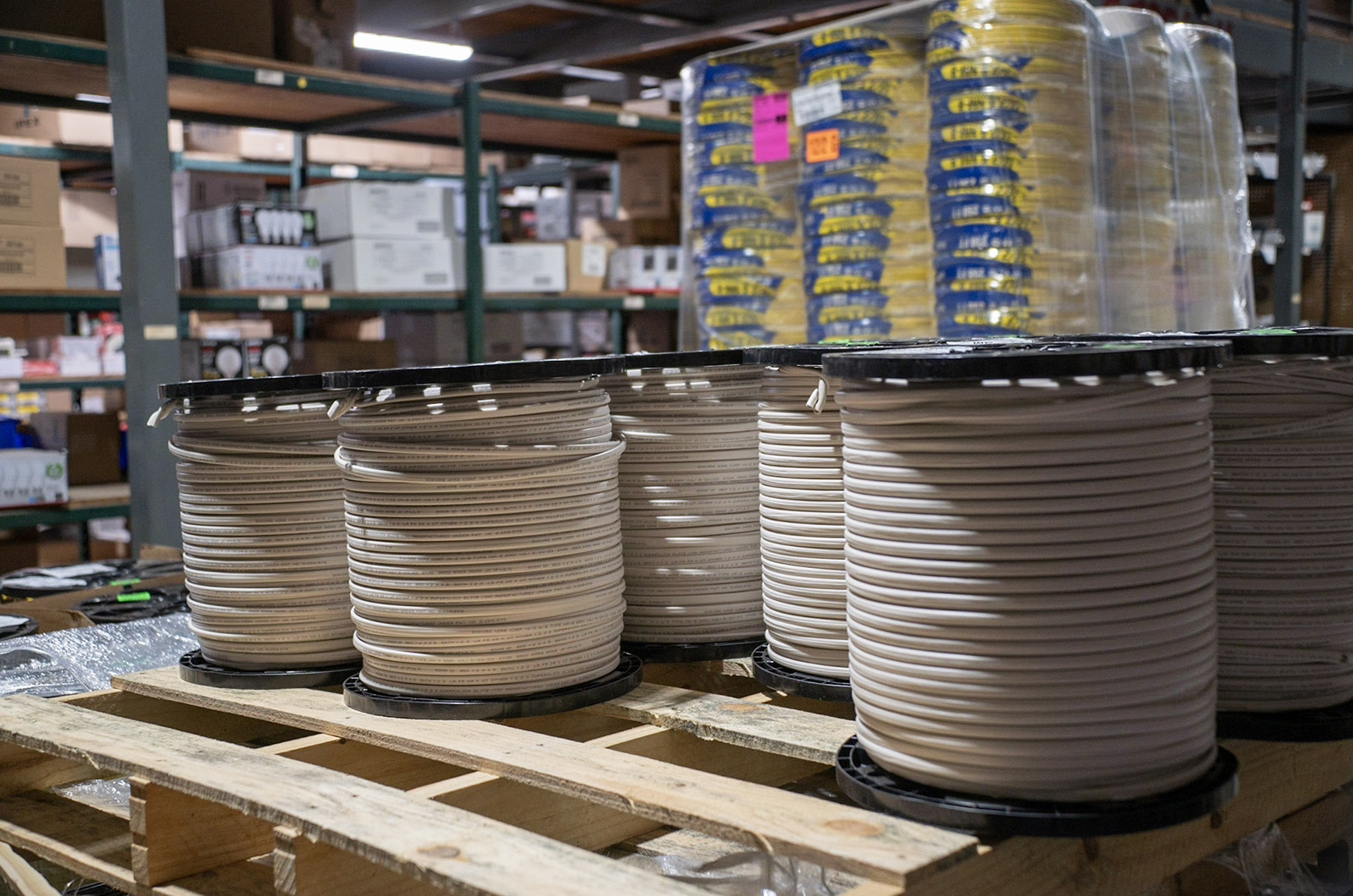While supply chain disruptions have contributed to skyrocketing prices for municipal construction and capital projects on the Vineyard, the impact of these disruptions has also driven up the cost of work on smaller, private homes as well.
For Island electricians, what once seemed to be a temporary, pandemic-era disruption now appears to be here to stay.
“You go through so many years of having everything you want, whenever you want it, the American way, you know,” said David Schwab, who has operated as an electrician on-Island since 1980. “And the next minute it’s like, ‘Oh, that’s gonna take a little while’.... You have to wait six months or a year for some components.”
Most electrical components, said Mr. Schwab, have roughly doubled in price since 2020. PVC pipe for electrical use, for instance, has jumped from $2 to $4 per foot, although that is down from the pandemic high of $12 per foot. Those costs feed into an overall rise in the price of building and wiring a home, he said.
Equipment shortages also continue to plague the industry. For a year and a half now, Mr. Schwab said, Island electricians’ major headache has been getting their hands on meter sockets, a component necessary for hooking up homes to the utility company’s electrical supply. If an electrician doesn’t have enough meter sockets in stock, a home might have to wait an extra year to get properly hooked up to the utility.
“You basically have to plan a year ahead or predict a year ahead what kind of projects you’re going to do,” he said, adding that the consistently-high level of construction on-Island makes it nearly impossible to over order.

“We try to keep at least 10 or 12 on order from a couple different suppliers,” he said. “If they show up and we don’t need it, then they’re more than happy to take them back.”
Shawn Broadley, manager of Granite City Electric Supply’s Vineyard Haven branch, said dealing with the supply chain as a wholesaler is more difficult than ever. The equipment shortages, he said, have been driven by a confluence of factors, many stemming from the many crises emerging across the globe in the last few years.
In terms of materials, for instance, the Russian invasion of Ukraine disrupted the global supply of electrical grade aluminum and steel, while ice storms in Texas shut down PVC production.
When shortages like this emerge, Mr. Broady said, manufacturers must go through a long process to get new materials approved for electrical use.
“We’ve got back orders as old as a year and a half,” he said.
According to Mr. Schwab, electrical suppliers used to keep more stock in reserve to prevent such a supply disruption, but after the housing market collapsed in 2008, companies began to thin out their inventories to avoid being stuck with it during a recession. When the housing boom of 2021 rolled around, the suppliers didn’t have enough of a buffer to keep up with demand.
And while plumbers, builders and other Island contractors have also experienced shortages, the problem for electricians has been exacerbated by the changing state of their trade.
“The push for electrification has been huge,” said Mr. Schwab, noting that most new homes run on electrical heating and cooling systems, rather than gas. “That’s putting a huge drain on additional electrical materials we never had to worry about in the past.”
Adding in an electric HVAC system, Mr. Schwab said, means they need equipment to handle higher electric amperage (400-amp meter sockets have been one of the hottest commodities), and manufacturers aren’t always ready to handle the flood of demand.
When the manufacturers set out to expand their operations to meet that demand, they are often forced to reckon with supply chain issues of their own, especially for complex factories like those that produce semiconductors necessary for everything from circuit breakers to microchips.
David Sprague, HVAC technician and co-owner of Nelson Mechanical Design, said they have had more trouble getting microchip control boards necessary to repair their systems, leading to up to seven-week delays in fixing their customer’s systems.
Mr. Sprague said the issue has eased from its crisis point a few years ago, but added that longer wait times and higher prices look to be the new normal for Island contractors going forward.
“We live in a slower, more expensive world now,” he said.







Comments (2)
Comments
Comment policy »